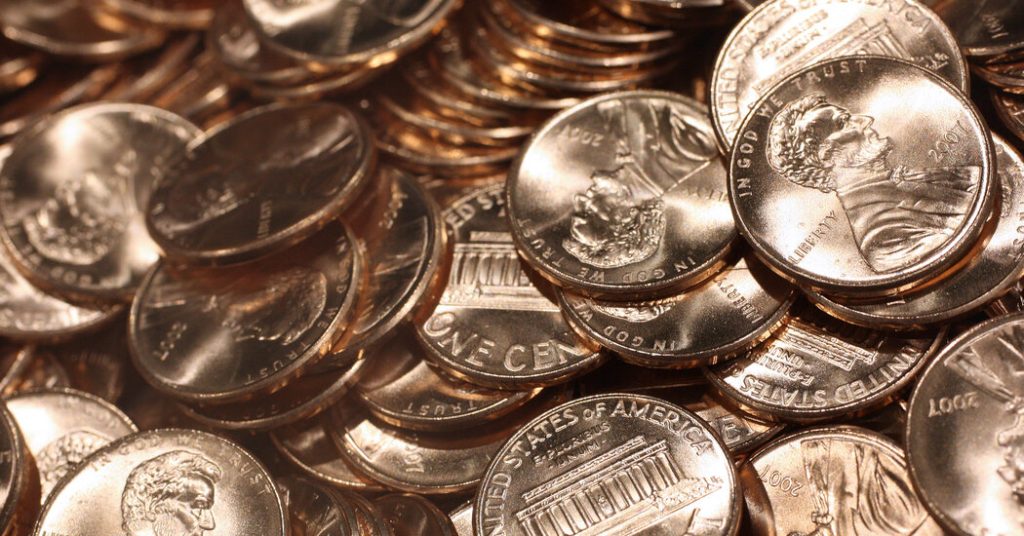President Trump’s Announcement to Halt Penny Production: A Move to Reduce Government Spending
President Trump made a significant announcement on Sunday night, revealing that he had instructed the Treasury Secretary to cease the production of new pennies. This decision, according to Trump, is part of a broader effort to reduce unnecessary government spending. In a post on Truth Social, he emphasized the need to eliminate waste from the federal budget, stating, "Let’s rip the waste out of our great nation’s budget, even if it’s a penny at a time." The President highlighted the inefficiency of producing pennies, pointing out that each penny costs the government more than 2 cents to produce. This announcement has sparked a wave of discussions about the practicality of continuing to produce pennies and the potential impact of such a policy change on the U.S. economy and society.
The Economic Argument for Halting Penny Production
President Trump’s decision to halt the production of pennies is rooted in a long-standing debate about the cost-efficiency of producing and circulating pennies. As the President noted, each penny costs the U.S. Mint more than 2 cents to produce. This means that for every penny minted, the government incurs a net loss. Over the years, this cumulative loss has added up to millions of dollars in wasted taxpayer money. Proponents of eliminating the penny argue that this is a clear case of government inefficiency and that ending production could help reduce unnecessary expenditures.
However, critics argue that the cost of producing pennies is not the only factor to consider. Pennies play a crucial role in the U.S. monetary system, and their elimination could have unintended consequences. For instance, the absence of pennies could lead to rounding of prices to the nearest nickel, which might result in subtle inflation for consumers. Additionally, businesses that rely on cash transactions could face operational challenges if pennies are no longer available. While the economic argument for halting penny production is compelling, it is essential to weigh the potential savings against the broader implications for the economy and everyday life.
Public Reaction and the Symbolic Nature of the Penny
The announcement to stop producing pennies has generated mixed reactions from the public. On one hand, many Americans agree with President Trump’s stance on reducing government waste and see this as a sensible step toward fiscal responsibility. The idea of saving money by eliminating a seemingly insignificant item like the penny resonates with those who are frustrated with what they perceive as excessive government spending.
On the other hand, the penny holds a certain nostalgic value for many people. As one of the oldest and most iconic coins in circulation, the penny is often viewed as a symbol of American history and culture. Eliminating the penny could be seen as a loss of cultural heritage, and some individuals have expressed sadness at the prospect of no longer having pennies as part of their daily transactions. Additionally, charities and organizations that rely on pennies for fundraising efforts have raised concerns about the potential impact of this decision on their operations.
The Role of Pennies in the Modern Economy
Despite their small value, pennies play a significant role in the U.S. economy. They are essential for ensuring that cash transactions can be conducted accurately, as not all prices end in whole dollar amounts or multiples of five cents. Without pennies, businesses would need to round prices up or down, which could lead to disparities in pricing and potentially disadvantage consumers who rely on cash. Furthermore, pennies are widely used in parking meters, vending machines, and other coin-operated services, where their absence could disrupt operations.
The elimination of pennies could also have implications for financial inclusion. Low-income individuals who rely heavily on cash transactions might be disproportionately affected by the absence of pennies, as they would have fewer options for making exact change. This raises questions about the fairness and equity of such a policy change. While the idea of halting penny production may seem like a straightforward cost-cutting measure, its potential impact on vulnerable populations cannot be overlooked.
Policy Considerations and the Future of U.S. Currency
President Trump’s decision to halt penny production is part of a larger conversation about the future of U.S. currency. In recent years, there has been a growing trend toward digital payments, with many consumers opting for contactless transactions over cash. This shift has led some to question whether physical currency, particularly coins of small denominations, remains relevant in the modern economy.
However, the U.S. Mint continues to produce billions of coins each year, and pennies remain the most widely produced coin. Despite the convenience of digital payments, cash remains a vital part of the financial system, particularly for unbanked individuals and small businesses. Any decision to halt the production of pennies would need to be carefully considered, taking into account both the economic and social implications.
The Broader Implications of Trump’s Decision
President Trump’s announcement to stop producing pennies has far-reaching implications that extend beyond the immediate issue of government spending. It reflects a deeper debate about the role of government in managing public resources and the balance between fiscal responsibility and cultural preservation. While some view the decision as a pragmatic step toward reducing waste, others see it as an overreach that could have unintended consequences for the economy and society.
As the debate over the future of the penny continues, it is important to approach the issue with a nuanced perspective that takes into account both the economic arguments for eliminating the penny and the cultural and practical reasons for preserving it. Ultimately, the decision to halt penny production will require careful consideration of the potential impacts on the U.S. monetary system, businesses, and individual citizens.
In conclusion, President Trump’s decision to stop producing pennies is a complex issue that touches on themes of government spending, economic efficiency, and cultural heritage. While the move may seem like a simple way to reduce waste, it raises important questions about the role of physical currency in the modern economy and the potential consequences for those who rely on it. As this story continues to unfold, it will be important to stay informed and engaged in the conversation about the future of the penny and its place in American life.












